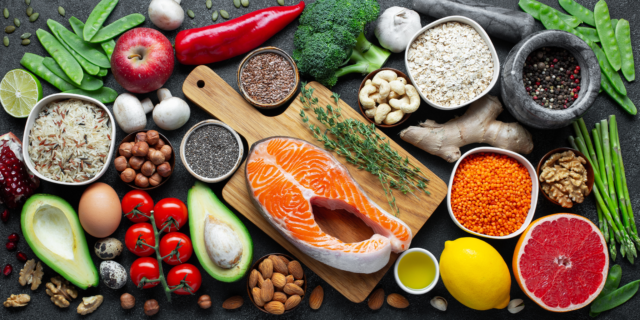Eating healthy is essential for your overall health and well-being. A healthy diet can help you maintain a healthy weight, reduce your risk of chronic diseases, and improve your mood and energy levels.
If you’re just starting out on your journey to healthy eating, it can be a little overwhelming. There are so many different diets and dietary advice out there, it can be hard to know where to start.
In this guide, we’ll cover everything you need to know to start eating healthy, from the basics of nutrition to practical tips for making healthy choices.
We’ll also provide you with recipes to help you get started. So whether you’re a beginner or just looking for some inspiration, this guide is for you.
The Basics of Nutrition
There are six essential nutrients that your body needs to function properly: vitamins, minerals, proteins, carbohydrates, and fats.
Vitamins and minerals are micronutrients that your body needs in small amounts. They play an important role in many bodily processes, including the growth, development, and repair of cells.
Proteins are macronutrients that your body needs to build and repair tissues. They are also important for the growth of muscle and the function of the immune system.
Carbohydrates are macronutrients that your body needs to provide energy. They are found in foods like fruits, vegetables, whole grains, and dairy products.
Fats are macronutrients that your body needs to absorb vitamins and minerals, produce hormones, and maintain the health of the skin and hair.
How to Make Healthy Choices
Here are some tips for making healthy choices when you eat:
- Choose fruits and vegetables at every meal and snack. Fruits and vegetables are packed with nutrients and fiber, and they are low in calories.
- Choose whole grains over refined grains. Whole grains are healthier than refined grains because they are higher in fiber and nutrients.
- Choose lean protein sources. Lean protein sources, such as chicken, fish, beans, and legumes, are low in saturated fat and calories.
- Limit your intake of saturated fat, trans fat, and added sugar. Saturated fat, trans fat, and added sugar can increase your risk of chronic diseases.
Recipes to Help You Get Started
Here are some recipes to help you get started on your healthy eating journey:
- Salad with grilled chicken and quinoa
- Lentil soup
- Vegetarian burger
- Omelet with spinach and cheese
Recapping…
Starting a healthy eating habit can be a challenge, but it’s worth it. By making small changes, you can make a big difference in your health.
Here are some tips to help you stick to your healthy eating goals:
- Set realistic goals. Don’t try to change everything overnight. Start with small changes, such as adding more fruits and vegetables to your diet.
- Find a support system. Having friends or family members who are also eating healthy can help you stay motivated.
- Make it convenient. Keep healthy foods on hand so you don’t have to resort to unhealthy options when you’re hungry.
With a little effort, you can learn to eat healthy and enjoy all the benefits that a healthy diet has to offer.
Fonts
- https://thedailyhealthguide.com/top-healthy-foods/
- https://nutrition.gov







